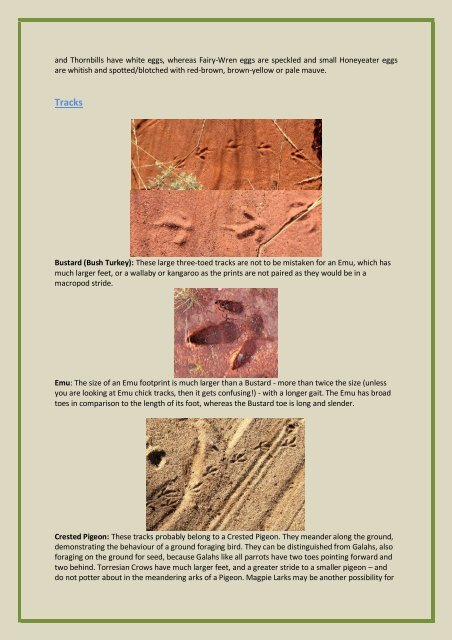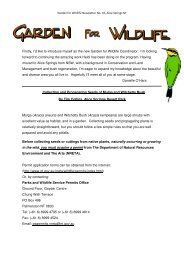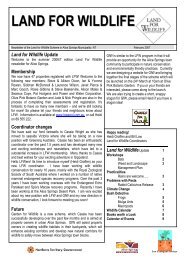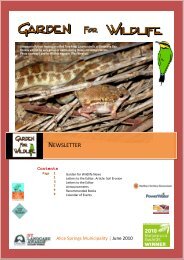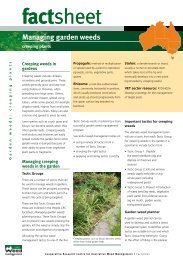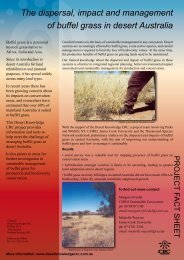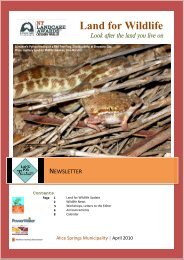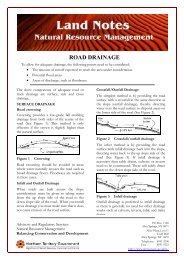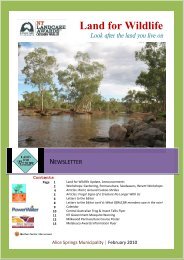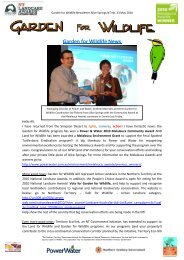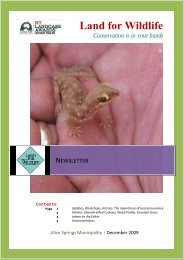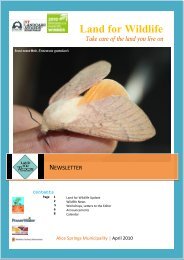Identifying Nests, Tracks, Scats, Burrows, & Other Signs
Identifying Nests, Tracks, Scats, Burrows, & Other Signs
Identifying Nests, Tracks, Scats, Burrows, & Other Signs
You also want an ePaper? Increase the reach of your titles
YUMPU automatically turns print PDFs into web optimized ePapers that Google loves.
and Thornbills have white eggs, whereas Fairy-Wren eggs are speckled and small Honeyeater eggs<br />
are whitish and spotted/blotched with red-brown, brown-yellow or pale mauve.<br />
<strong>Tracks</strong><br />
Bustard (Bush Turkey): These large three-toed tracks are not to be mistaken for an Emu, which has<br />
much larger feet, or a wallaby or kangaroo as the prints are not paired as they would be in a<br />
macropod stride.<br />
Emu: The size of an Emu footprint is much larger than a Bustard - more than twice the size (unless<br />
you are looking at Emu chick tracks, then it gets confusing!) - with a longer gait. The Emu has broad<br />
toes in comparison to the length of its foot, whereas the Bustard toe is long and slender.<br />
Crested Pigeon: These tracks probably belong to a Crested Pigeon. They meander along the ground,<br />
demonstrating the behaviour of a ground foraging bird. They can be distinguished from Galahs, also<br />
foraging on the ground for seed, because Galahs like all parrots have two toes pointing forward and<br />
two behind. Torresian Crows have much larger feet, and a greater stride to a smaller pigeon – and<br />
do not potter about in the meandering arks of a Pigeon. Magpie Larks may be another possibility for


